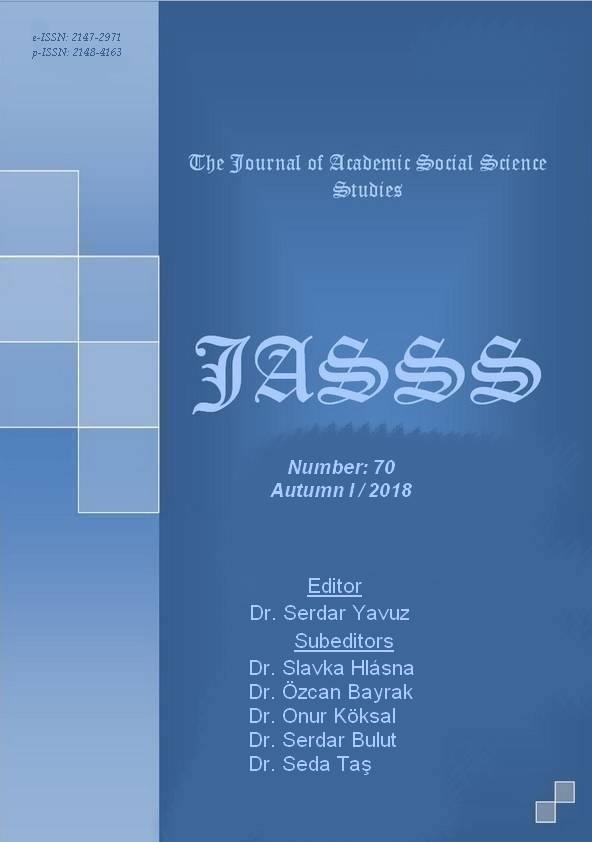Author :
Abstract
Ortaçağ İslam dünyasında Bağdat, Şam ve Kahire gibi önde gelen şehirlerde devlet adamları tarafından muazzam hastaneler yaptırılmış ve bu yapılar uzun yıllar ayakta kalarak hastalara hizmet etmişlerdir. Memlükler döneminde de devlet adamları eliyle hastaneler yaptırılmaya devam edilmiştir. Bunlar arasında XIII. yüzyılın sonlarında Memlük Sultanı Kalavun (678-689/1279-1290) tarafından Kahire’de bir külliye içinde yapılan hastane öne çıkmaktadır. Bu külliyede hastane ile birlikte medrese ve türbe de yer almaktaydı. Vakıf gelirlerinin çokluğu, geniş imkanlara sahip olması ve meşhur hekimlerin burada çalışması gibi özellikleri dolayısıyla döneminin en önemli hastanelerinden biri olduğu anlaşılmaktadır. Ayrıca bu hastane, asırlar boyunca hem hastaların tedavi edildiği bir sağlık kurumu hem de öğrencilere tıp ilminin öğretildiği eğitim kurumu olarak işlev görmüştür. Bu hastanenin açılışından kısa bir süre sonra dönemin ünlü hekimi İbnü’n-Nefîs’in (ö. 687/1288), kitaplarını buraya bağışlamış olması, hastanede tıp eğitimine verilen ehemmiyeti göstermektedir. Yine dönemin önde gelen bazı hekimlerinin burada ders vermesi, Kalavun hastanesinin tıp eğitimi hususunda gözde bir konumda olduğunu düşündürmektedir. Günümüze ulaşan vakfiyesinde net bir şekilde ifade edildiği üzere, burada zengin ya da fakir ayrımı yapılmaksızın hastalar ücretsiz tedavi edilmektedir. Elinizdeki çalışmada, Kalavun hastanesinin yaklaşık iki buçuk yüzyıllık bir tarihî kesiti üzerinde durulacaktır. Hastanenin vakfiyesi ile dönemin kronikleri ve biyografik eserleri doğrultusunda hastanenin yapılma sebebi, söz konusu süre zarfında hastanede tedavi gören hastalara hizmet verilen klinik alanlar ve hastalara sunulan hizmetler ile tıp eğitiminde hastanenin rolü ele alınacaktır.
Keywords
Abstract
In the medieval Islamic world, in the leading cities such as Baghdad, Damascus and Cairo enormous hospitals being built by the dignitaries, and these structures survived for many years and served the patients. During the Mamluk period hospitals continued to build by assist of the dignitaries. Among them the hospital which first came to our mind was built by Mamluk Sultan Qalawun (678-689 / 1279-1290) at the end of the 13th century in one of the complex in Cairo. In this complex, there were the hospital along with madrasahs and mausoleums. The Qalawun hospital known as one of the prestige hospital at that time because of the abundance of revenue of its Foundation, existence of the wider opportunities and top of all there were many famous physicians working as well. In addition, this hospital has functioned as a health institution where patients being treated and as an educational institution where medical education being taught to students for centuries. Shortly after the opening of this hospital, one of the famous doctor Ibn al-Nafis’s (d. 687/1288) donation of his books to this hospital more than enough to demonstrates the importance given to medical education at the hospital. Also, some of the leading physicians of the period taught there, this had suggested that Qalawun hospital was in a favorable position for medical education. In the waqfiya which reached our day expressed clearly that patients being treated free of charge without discrimination of rich or poor in that hospital. In this paper, we will focus on around two and half centuries historical period of the Qalawun hospital. We referred to line of chronologic and biographic works along with the waqfiya in that period, and try to work on the reason for building the hospital during that period, the clinical areas where being served for treating the patients and the role of hospitals in medical education and services offered to patients.
